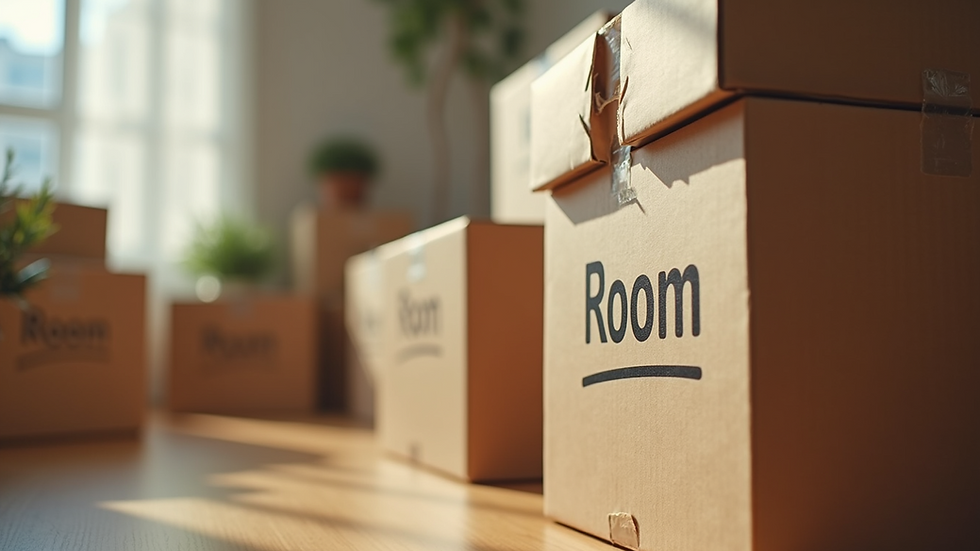Expert Advice for Moving with Ease
- wemovedmv1
- Jul 7
- 3 min read
Moving to a new home can be an overwhelming experience. The excitement of a fresh start often comes hand in hand with the chaos of packing and organizing. However, with the right strategies, you can make your move much simpler and even enjoyable. This blog post will provide expert advice on how to navigate your transition smoothly, ensuring that you embrace your new chapter without the stress.
Moving Advice: Creating a Detailed Moving Plan
One of the most effective ways to simplify your moving process is to create a detailed plan. Start by setting a timeline for your move. Break down tasks into manageable chunks, such as sorting belongings, packing, and arranging transportation.
Tip: Use a checklist to stay organized. Include items like notifying utilities, changing your address, and scheduling movers if applicable.
Consider using digital tools like Google Drive or Trello to track your progress. These platforms allow for collaboration if you have family or friends helping you. Aim to have a plan in place at least two months before your move date.

Essential Moving Advice: Sorting and Decluttering
Before you begin packing, take time to sort through your belongings. Moving is an excellent opportunity to declutter. Go through each room and categorize your items into three groups: keep, donate, and discard.
Statistics: According to a survey by the National Association of Professional Organizers, Americans accumulate 20% more clutter every year.
By letting go of items you no longer need, you not only lighten your load but also create a more organized living space in your new home. For the items you choose to donate, find local charities that can benefit from your generosity.

Smart Packing Techniques
Once you've decluttered, it's time to pack. Use quality packing materials to ensure your belongings arrive safely. Strong boxes, bubble wrap, and packing tape are essentials.
Pro Tip: Start with non-essential items first—these are things you rarely use but still want to keep. This could include seasonal clothing or decor.
When packing, label each box with its contents and the room it belongs to. This can save you a lot of time when unpacking. Consider creating a "first-night" box that includes items you will need immediately at your new home, such as toiletries, clothes, and basic kitchen supplies.

Hiring Professionals vs. DIY
Deciding whether to hire moving professionals or handle the move yourself is a crucial decision.
Consideration: Hiring professional movers can save time and energy, particularly with heavy furniture or long-distance moves. They are trained to handle valuable items safely.
On the other hand, if you’re on a tight budget, you might opt for a DIY move. In such cases, ensure you have enough helping hands and the right equipment, such as dollies and moving straps.
Regardless of your choice, give yourself ample time to arrange logistics. If you choose professionals, book your movers at least a month in advance to avoid last-minute hassles.
Settling In With Ease
Once you've arrived at your new home, take your time unpacking. Start with essential items and gradually fill your space.
Recommendation: As you unpack, take a moment to assess where you want to place furniture and decor. This can make your home feel more inviting.
It's also a great time to explore your new neighborhood. Visit local shops and cafes, and meet your neighbors. Making connections can help you feel at home faster.
Bonus Tip: Set up your utility services before the move so that essentials like electricity and water are running when you arrive.
Maximizing Your New Space
As you settle in, think about how to maximize your new space's potential. Use furniture arrangements that allow for airflow and natural light.
Example: Consider multi-functional furniture, such as couches with storage or tables that extend, to make the most of smaller areas.
Also, don't forget about outdoor spaces. If you have a yard or balcony, add some plants or outdoor furniture to create a relaxing environment.
Above all, remember to embrace the changes and opportunities that come with moving. Each room can reflect your character and style, making it uniquely yours.
Moving to a new home doesn’t have to be a chaotic experience. By following these tips and planning ahead, you can turn what could be a stressful occasion into a manageable and even enjoyable adventure. Utilize expert advice throughout this process, focusing on organization and efficient packing. Embrace moving with ease as you create your new life in your new home. Happy moving!





Comments